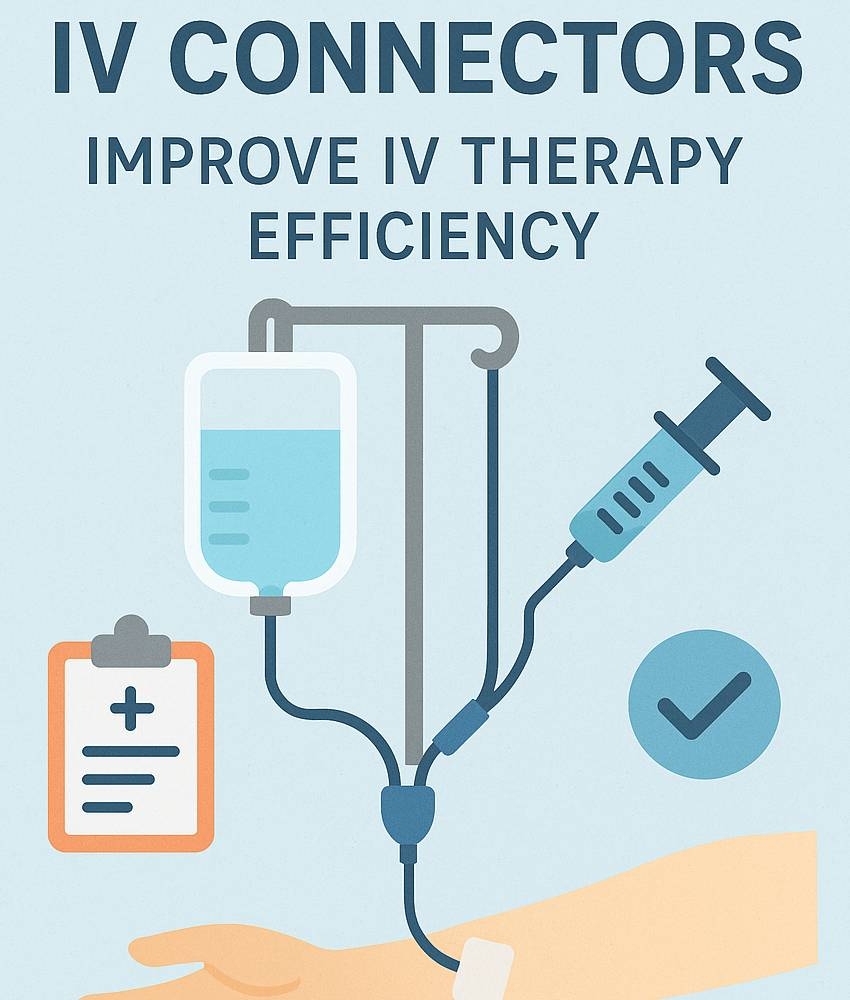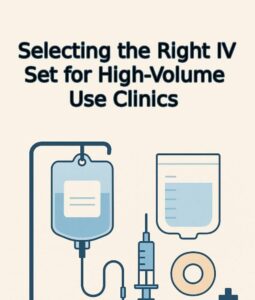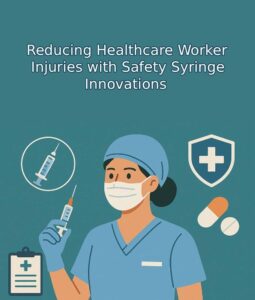Intravenous therapy is a cornerstone of modern medicine, and reliable fluid delivery means everything—from hydration and nutrient support to medication administration. That’s where the Y‑site IV connector and multi‑port infusion set shine. These innovations in IV tubing connector design revolutionize how clinicians administer fluids, meds, and blood products. In this article, we explore exactly how Y‑site IV connector technology enhances workflows, reduces risk, and boosts patient safety. Know more..
1. What Are Y‑site IV connectors and IV tubing connectors?
A Y‑site IV connector is a small device attached to IV tubing that features a “Y”-shaped design with an access port. By integrating it into an IV tubing connector, healthcare workers can inject medications or flush lines without disconnecting primary lines. A multi‑port infusion set includes multiple access points, enabling simultaneous delivery of separate fluid streams.
2. Boosting Efficiency in Clinical Settings
2.1 Fewer Line Changes = Faster Workflow
Manually reconnecting different IV lines wastes valuable time and increases risk of error. With Y‑site IV connectors integrated into IV tubing connector systems, clinicians can attach syringes or secondary lines instantly. That streamlines workflows and saves minutes per patient—minutes that add up fast in busy wards.
2.2 Frictionless Coordination of Multiple Infusions
Using a multi‑port infusion set, nurses can manage hydration, antibiotics, nutrition, and electrolytes through one central hub. Each Y‑site IV connector port has secure valving, supporting precise dosing without juggling multiple standalone lines.
2.3 Reduced Cross-Contamination Risk
Every connector hub includes self-sealing valves that close once injections finish. These valves protect sterile fluid paths and reduce accidental fluid mixing. With the right IV tubing connector lineup, CDC and WHO protocols are easier to comply with.
3. Safety Gains from Y‑site IV connectors
3.1 Needle-free Access
Most Y‑site IV connectors are needle-free, meaning injection or access uses a blunt cannula. Nurses avoid sharps injuries and risk of bloodborne pathogen exposure.
3.2 Air-in-Line Protection
Advanced IV tubing connector models feature integrated air detectors and pinch clamps. Those features protect against dangerous air embolisms—critical when managing high flow or pressurized infusions.
3.3 Backflow Prevention
One-way check valves in Y‑site IV connectors stop blood or other fluids from returning to the tubing. That prevents dosage miscalculations, safeguarding accurate IV therapy delivery.
4. Customization: Picking the Right Multi‑port infusion set
Not all multi-port sets are created equal. Here’s what to look for:
- Number of Ports: Choose based on how many concurrent lines your patient needs.
- Flow Configurations: Look for options that support both bolus and continuous flows.
- Material Compatibility: Make sure connectors are suitable for harsh meds or lipid-based nutrition solutions.
- Ease of Use: Ergonomic grips, transparent housing, and tangle-resistant tubing make life easier for clinicians.
Opt for IV tubing connector assemblies from manufacturers that meet ISO 80369 and EN Fit requirements—compatible, safe, and future-proof for global use.
5. Real‑World Use Cases of Y‑site IV connectors
5.1 Critical Care
In ICU settings, patients often need multiple infusions at once. Simple multi‑port infusion sets with Y‑site IV connector channels allow staggered or simultaneous delivery without disrupting ongoing drips.
5.2 Emergency Medicine
During codes or trauma response, seconds matter. A Y‑site IV connector offers quick drug delivery—hydrocortisone, fluids, vasopressors—without delay.
5.3 Pediatric and Geriatric Care
Small veins and fragile tissue mean fewer sticks are critical. A single multi-port hub cuts peripheral line usage and reduces trauma. The easy‑flush feature also helps reduce infection risk in vulnerable groups.
5.4 Oncology
Chemotherapy protocols often require complex infusion schedules. Using a multi‑port infusion set, true zero‑give drug administration is possible with seamless switching between saline, chemo agents, and flushes—all via Y‑site IV connectors built into one line.
6. Cost Benefits & Sustainability
6.1 Reduced Supply Usage
Fewer peripheral catheters and extension sets reduces inventory churn. That means fewer disposables, fewer sharps, and fewer biohazard bags.
6.2 Lower Labor Costs
Faster line access = shorter procedure times. Nurses can manage more patients or tasks, reducing overtime and freeing up resources.
6.3 Decreased Infection Rates
With fewer disconnections, hospital-acquired bloodstream infections drop. That means less antibiotic use, shorter stays, and overall savings.
6.4 Eco-Friendly Gains
Multi‑port hubs reduce plastic waste. Hospitals are increasingly assessing eco-footprints. A switch to high‑quality IV tubing connector systems with reusable, recyclable components supports green healthcare goals.
7. Tech Trends: What’s Next for Y‑site IV connectors
7.1 Smart Chip Integration
Connected, RFID-enabled Y‑site IV connectors now capture dose time, flush history, and usage logs. Future infusion pumps can sync automatically for dosing verification.
7.2 Anti‑Microbial Liners
Some manufacturers are embedding silver ions or antimicrobial coatings in IV tubing connector surfaces. That’s a frontier in reducing port colonization above and beyond flush protocols.
7.3 Pre‑filled Syringe Lock‑On Hubs
To further speed delivery, specialized hubs now accept pre‑filled syringes that click-lock right onto Y‑site IV connector ports. That cuts prep time and syringe handling.
7.4 3D‑Printed, Patient‑Specific Hubs
Prototypes are showing 3D-printed port manifolds shaped precisely for patient IV site layout. Customized tubing angles could reduce kinks and maximize flow in anatomies like neonates.
8. Implementation Best Practices
- Train caregivers on locking mechanism use, pressure limits, and flush protocols. Sim drills ensure confidence.
- Develop protocols for line cleaning before port access. Use chlorhexidine wipes and ensure contact time.
- Use clear labels and caps for unused ports—no guessing which line carries what.
- Audit usage and outcomes—track complications, time savings, and cost dips monthly.
- Review vendor upgrades annually. Smart and antimicrobial features should be evaluated every 12‑18 months.
9. Spotlight: Choosing the Right Y‑site IV connector Assembly
Here’s a quick comparison table of top features to evaluate:
| Feature | Must‑Have Standard | Premium Offers |
| Ports per hub | 2–4 | 6+ |
| Valve style | Split septum or membrane | Needle-free valved gateways |
| Lock type | Twist or click | RFID-enabled twist-lock |
| Flow capacity | Upto 300 mL/hr | 1200 mL/hr+ with clamp track |
| Pressure rating | Standard 300 mmHg | High-pressure 600 mmHg |
| O-ring sealing | Silicone or EPDM | Antimicrobial-coated polymer |
| Packaging | Sterile, single-use | Eco-box or recyclable shells |
| Compatibility | IS0 80369/EN Fit ends | Universal Luer-lock & NRFit |
10. Future Outlook & Conclusion
The Y‑site IV connector has gone from “nice-to-have” to essential in modern therapy. With integrated IV tubing connector designs and multi‑port infusion set options, hospitals are seeing faster care delivery, fewer complications, and lower costs. As connectivity, antimicrobial tech, and customization advance, expect next-generation hubs to go from passive access points to active care coordinators.
Let your facility’s vascular access policies reflect this shift: standardize on high-quality Y‑site IV connector systems, track outcomes, and invest in training. That way, you’ll deliver patient-centric, future-ready IV therapy—safer, greener, and more efficient.
TL;DR
- Y‑site IV connector = faster, safer access to IV lines
- Multi‑port infusion set centralizes multiple fluids through one hub
- Key benefits: cost savings, infection reduction, workflow speed
- Investing in smart, antimicrobial, and customizable hubs is the next wave
By optimizing for the right IV tubing connector design, today’s caregivers unlock IV therapy driven by speed, efficiency, and patient safety.






